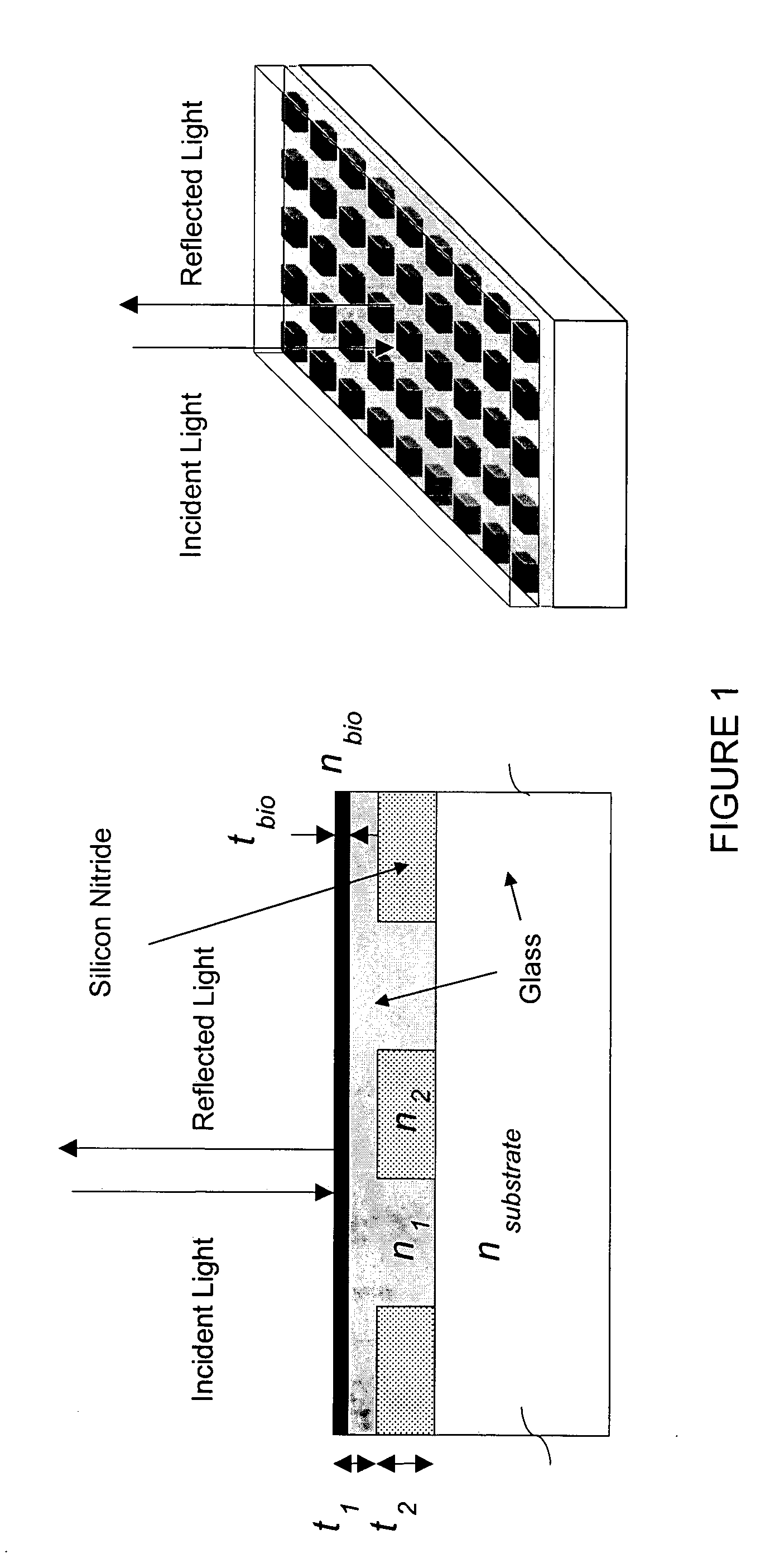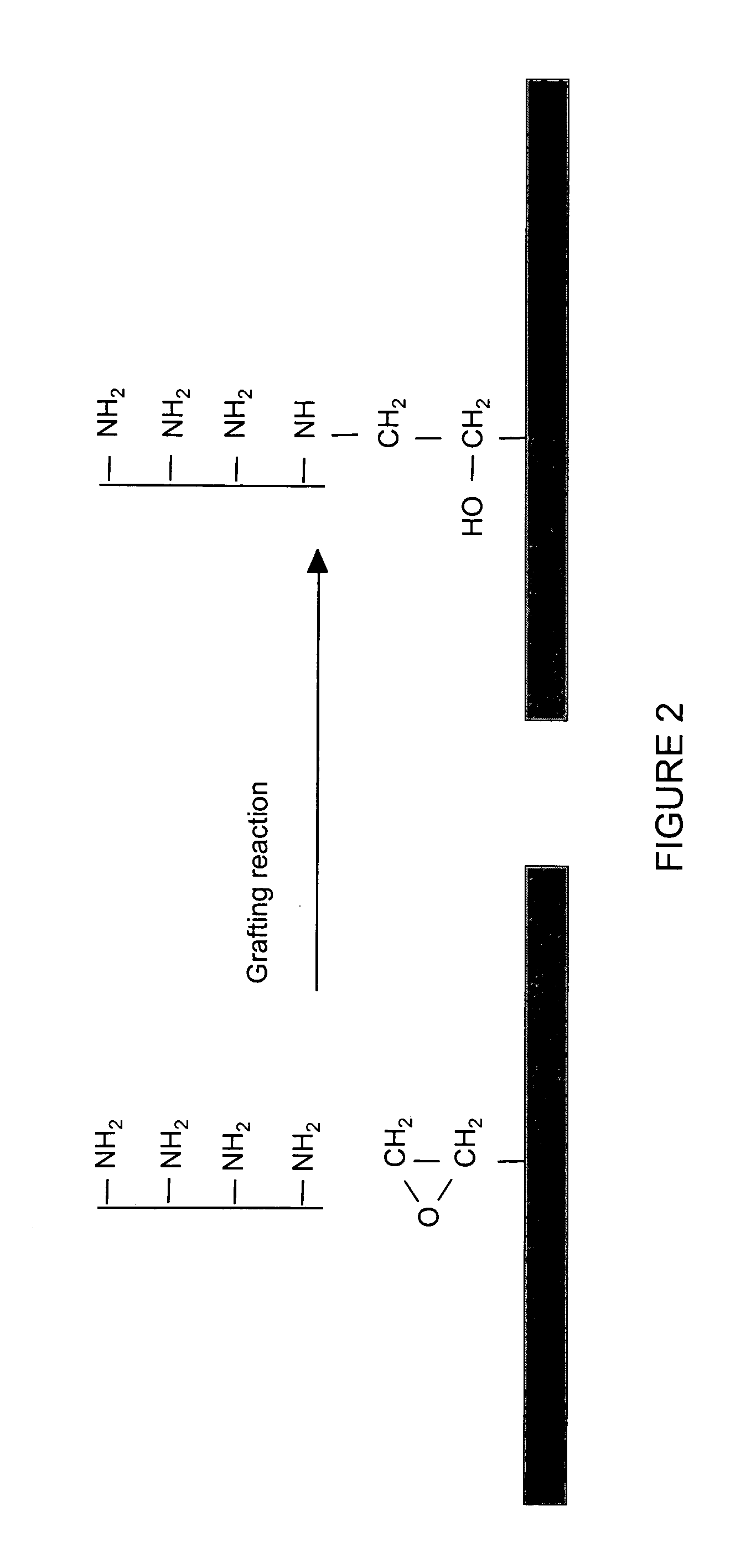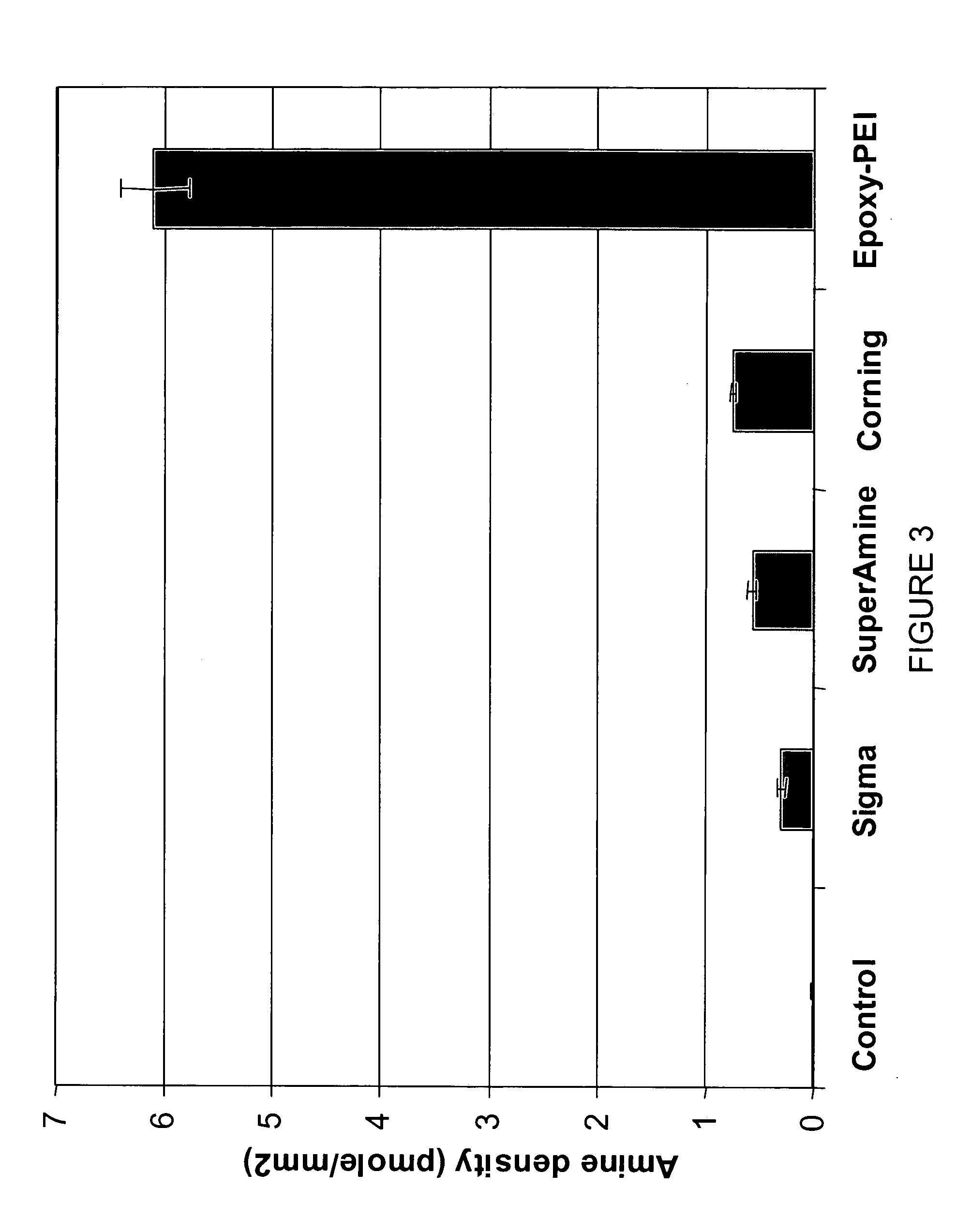High-density amine-functionalized surface
- Summary
- Abstract
- Description
- Claims
- Application Information
AI Technical Summary
Benefits of technology
Problems solved by technology
Method used
Image
Examples
example 1
Fabrication of a SWS Biosensor
[0081] The detailed manufacture process of the SWS biosensor has been described previously. See, e.g., Cunningham B. et al., Sensor and Actuators B 6779, 1-6 (2002), incorporated herein by reference. Specifically, an optical-grade polymer film was used as a support of SWS sensor. A UV-curable acrylic-based polymer coating was coated onto the film and replicated using a silicon mask that has 96 circles corresponding to the standard format of a 96-well micro-titer plate, which circles form an SWS structure. A UV lamp RC600, provided by Xenon Corporation (Woburn, Mass.), was used to cure the coating after the replication. Subsequently, a titanium dioxide layer and a silicone dioxide layer were deposited onto the top of the surface.
example 2
Silanization Using an Epoxy Silane
[0082] The fabricated SWS biosensor sheets were immersed in 50 mLs of 50 parts per million NaOH in deionized water for 20 minutes, and then rinsed with a large amount of deionized water. A silane solution was prepared using 4 mL 3-glycidoxypropyltrimethoxysilane (Z-6040), provided by Dow Corning (Midland, Mich.), and 196 mL of a solvent mixture containing 95% ethanol, 5% deionized water and 0.1 mL acetic acid. The silane solution was aged for 15 minutes prior to silanization. The cleaned SWS biosensor sheets were immersed in the silane solution for 1 minute. They were then rinsed three times with 200 mL isopropanol. The SWS biosensors were dried using a centrifuge and cured in a 65% relative humidity chamber for 18 hour.
example 3
Surface Grafting with Polyethylenimine
[0083] Polyethylenimine (PEI), provided in a solution of 50% in water by Aldrich Chemical (Milwaukee, Wis.), was diluted to 20%, 15%, 10%, 10%, 5% and 1.5% and adjusted to pH 8.0 with concentrated hydrogen chloride. The silanized SWS biosensor sheets described in Example 2 were immersed in the prepared PEI solutions for 18 hours, and were rinsed first using deionized water, then rinsed using 3×PBS plus 0.5% Tween 20, and were finally rinsed using deionized water.
PUM
| Property | Measurement | Unit |
|---|---|---|
| Density | aaaaa | aaaaa |
| Biological properties | aaaaa | aaaaa |
| Plasticity | aaaaa | aaaaa |
Abstract
Description
Claims
Application Information
 Login to View More
Login to View More - R&D
- Intellectual Property
- Life Sciences
- Materials
- Tech Scout
- Unparalleled Data Quality
- Higher Quality Content
- 60% Fewer Hallucinations
Browse by: Latest US Patents, China's latest patents, Technical Efficacy Thesaurus, Application Domain, Technology Topic, Popular Technical Reports.
© 2025 PatSnap. All rights reserved.Legal|Privacy policy|Modern Slavery Act Transparency Statement|Sitemap|About US| Contact US: help@patsnap.com



